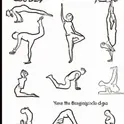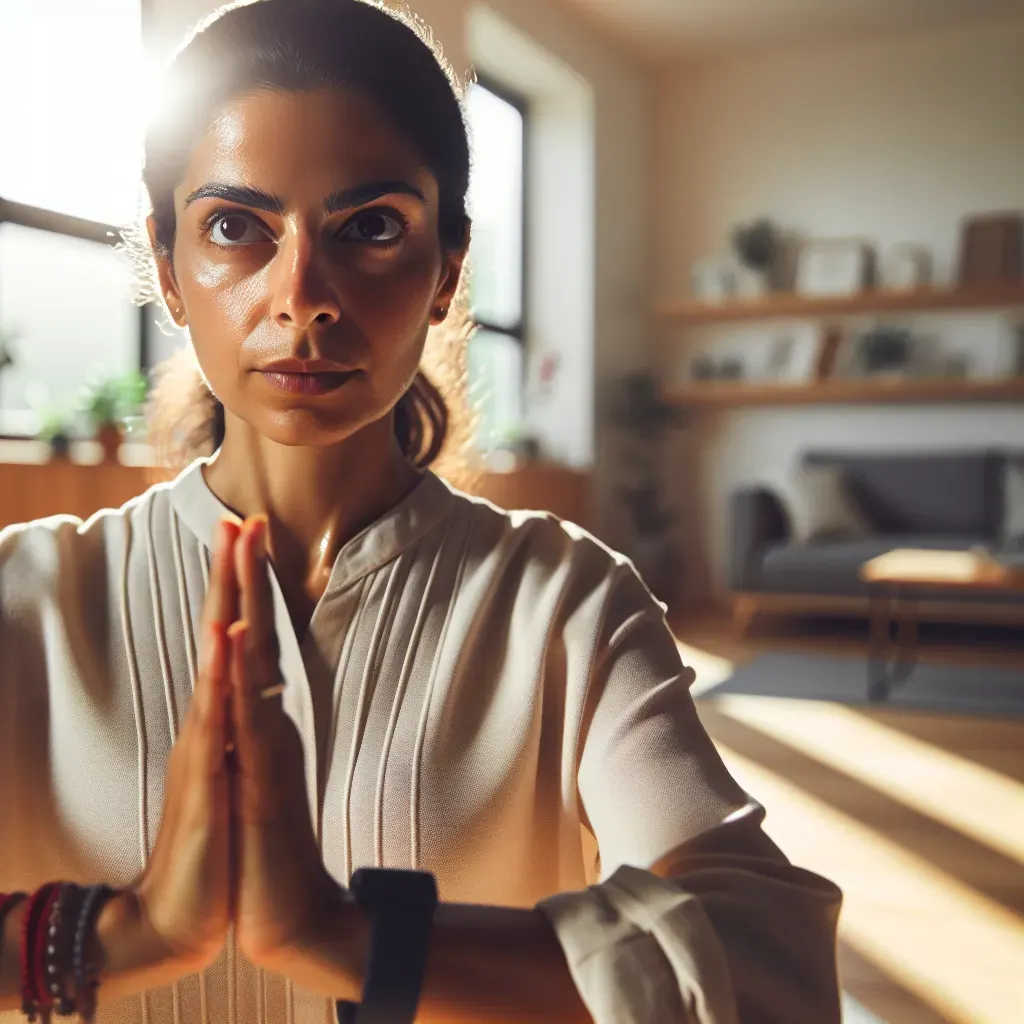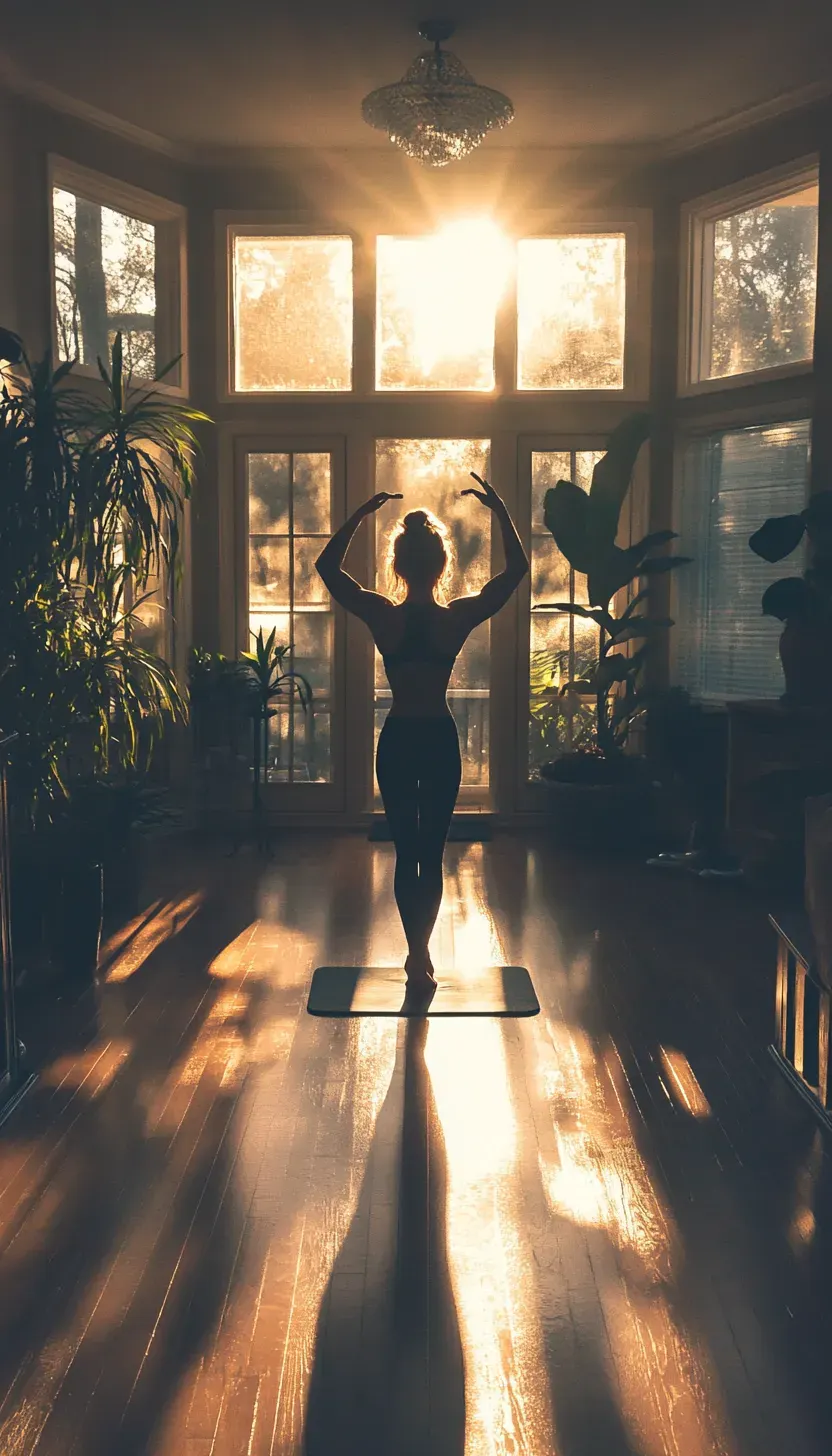Unleash Inner Strength And Flexibility: 5 Surprising Yoga Poses For A Dynamic Body
Do you ever feel like your yoga practice could use a little spice? Like you're stuck in a downward dog rut, yearning for something to reignite the fire within? If so, you're in good company.
It's all too common to find ourselves craving excitement and change in our yoga routines, longing for that exhilarating moment when we step onto the mat and feel truly alive.
Picture this: you roll out your yoga mat, ready to dive into your practice, but instead of feeling invigorated, you're met with a sense of stagnation.
The same old poses and the same old sequences are enough to make anyone feel like they're stuck in a yoga rut. But fear not, because I've got a secret weapon to share with you.
Today, we're breaking free from the ordinary and diving headfirst into a world of excitement and adventure. We're saying goodbye to the mundane and hello to a whole new level of dynamism on the mat.
So if you're ready to shake things up and unleash your inner warrior, join me as we explore five surprising yoga poses guaranteed to breathe new life into your practice.
Get ready to stretch your limits, challenge your assumptions, and discover a side of yourself you never knew existed.
The journey ahead may be exhilarating, but trust me the rewards are well worth it. So grab your mat, strap on your adventurous spirit, and let's embark on this transformative journey together. Are you ready? Let's dive in.
1. Pose: Crow (Bakasana)
Embrace Your Inner Superhero with Crow Pose (Bakasana)
Benefit:
Crow Pose offers a multitude of physical benefits, primarily targeting the strengthening of the arms, shoulders, and wrists. It also engages the core muscles, promoting stability and balance. Mentally, mastering Crow Pose cultivates focus, concentration, and the ability to overcome fear.
Surprising Point:
Beyond the physical challenge, Crow Pose provides a profound opportunity to develop mental resilience. Balancing on your hands requires unwavering concentration and the willingness to confront fear head-on. As you persist through the initial discomfort, you'll unlock a newfound sense of confidence and inner strength.
Description:
To practice Crow Pose, begin in a squatting position with your feet slightly apart. Place your hands shoulder-width apart on the mat, spreading your fingers wide for stability.
Lean forward, shifting your weight onto your hands as you lift your hips and engage your core. Gently lift one foot off the ground, then the other, until your knees rest on the backs of your upper arms.
Maintain a strong gaze forward and continue to engage your core to hold the pose. Start with short holds, gradually increasing as you build strength and confidence.
Encouragement:
As you approach Crow Pose, remember that falling is part of the journey. Embrace each attempt as an opportunity to learn and grow stronger. With perseverance and determination, you'll soon soar into Crow Pose with the grace and confidence of a true yoga warrior.
Testimonial:
"I used to think Crow Pose was out of reach for me. But through consistent practice and a willingness to face my fears, I discovered a strength within myself I never knew existed.
Each time I fall, I get back up with renewed determination. Crow Pose has taught me that true growth happens outside of my comfort zone." - Emily
2. Pose: Camel (Ustrasana)
Subheading: Open Your Heart and Mind with Camel Pose (Ustrasana)
Benefit:
Camel Pose offers a deep stretch to the front of the body, including the chest, abdomen, and thighs.
This heart-opening posture promotes emotional well-being by releasing tension and fostering a sense of vulnerability and openness. It boosts confidence and self-assurance, empowering practitioners to embrace life's challenges with courage.
Surprising Point:
While physically demanding, Camel Pose holds the key to emotional release and inner transformation.
By surrendering to the vulnerability of the posture, practitioners can release stored emotions and find peace within themselves. This emotional cleansing rejuvenates the spirit, leaving one feeling lighter and more resilient.
Description:
To practice Camel Pose, kneel on the mat with your knees hip-width apart. Place your hands on your lower back for support, fingers pointing downward.
Inhale deeply as you lift your chest toward the sky, arching your back and reaching your hands toward your heels. Keep your neck long and gaze upward, opening your heart space fully. Hold the pose for several breaths, feeling the stretch across the front of your body.
Encouragement:
As you explore Camel Pose, allow yourself to embrace vulnerability and surrender to the experience. Trust in your body's ability to guide you through the pose, and remember that each stretch brings you closer to a deeper sense of self-acceptance and inner peace.
3. Pose: Warrior III (Virabhadrasana III)
Find Balance and Poise in Warrior III (Virabhadrasana III)
Benefit:
Warrior III strengthens the legs, ankles, and core muscles, improving balance and stability. By challenging the body's equilibrium, this pose fosters a sense of physical steadiness that translates into mental resilience.
Practicing Warrior III cultivates a deep connection between mind and body, enhancing overall proprioception and inner stability.
Surprising Point:
While often associated with physical strength, Warrior III's true magic lies in its ability to sharpen mental focus and concentration.
Balancing on one leg demands unwavering attention and presence, honing the practitioner's ability to navigate challenges with clarity and determination. Through consistent practice, Warrior III fosters a profound sense of inner calm and balance.
Description:
To practice Warrior III, begin in Mountain Pose with your feet hip-width apart and arms by your sides. Shift your weight onto your left foot and hinge forward at the hips, extending your right leg straight back behind you.
Keep your hips square and your torso parallel to the ground, reaching your arms forward alongside your ears. Engage your core muscles to maintain stability and hold the pose for several breaths. Repeat on the opposite side.
Encouragement:
As you explore Warrior III, embrace the wobbling and find strength in your ability to regain balance.
Approach each wobble as an opportunity to refine your focus and deepen your connection to the present moment. With practice, you'll cultivate a sense of inner poise that extends far beyond the yoga mat.
Testimonial:
"Warrior III has been a game-changer for me, both physically and mentally. It's not just about standing on one leg it's about finding balance amidst life's chaos.
Each time I enter Warrior III, I feel a sense of grounding and stability wash over me. It's a reminder that no matter what challenges come my way, I have the strength to overcome them." - David
4. Pose: Supported Headstand (Salamba Sirsasana)
Gain New Perspectives with Supported Headstand (Salamba Sirsasana)
Benefit:
Supported Headstand increases blood flow to the brain, improving cognitive function and enhancing mental clarity.
This inversion pose also strengthens the upper body and core muscles, promoting overall stability and alignment. By flipping the perspective, Supported Headstand offers a fresh outlook on life, fostering creativity and inspiration.
Surprising Point:
While the physical benefits of a Supported Headstand are evident, its impact on mental well-being is equally profound. Inverting the body stimulates the brain and nervous system, rejuvenating the mind and boosting mood.
Practising Supported Headstand encourages practitioners to let go of limiting beliefs and embrace a more expansive mindset, opening the door to new possibilities.
Description:
To practice Supported Headstand, begin by kneeling on the mat with your forearms resting on the ground in front of you, elbows shoulder-width apart. Interlace your fingers and place the crown of your head on the mat, forming a triangle with your forearms.
Lift your hips toward the sky, walking your feet toward your head until your hips stack directly above your shoulders.
Engage your core muscles to lift your legs toward the ceiling, keeping them straight and active. Hold the pose for several breaths, focusing on steady breathing and maintaining alignment.
Encouragement:
As you journey into the Supported Headstand, approach the pose with patience and curiosity. Trust in your body's ability to support you as you explore new perspectives and embrace the unknown.
Remember that every inversion is an opportunity to expand your horizons and tap into your limitless potential.
5. Pose: Wheel (Urdhva Dhanurasana)
Embrace Fearlessness with Wheel Pose (Urdhva Dhanurasana)
Benefit:
Wheel Pose strengthens the back, arms, and wrists while opening the chest and shoulders. This energizing backbend releases tension and counteracts the effects of prolonged sitting, promoting spinal health and flexibility.
By expanding the chest and lifting the heart toward the sky, Wheel Pose instils a sense of fearlessness and liberation, empowering practitioners to break free from self-imposed limitations.
Surprising Point:
While the physical benefits of Wheel Pose are evident, its transformative impact on the mind is equally profound. As you arch your back and lift your heart toward the heavens, you release stagnant energy and unlock your creative potential.
Wheel Pose invites practitioners to let go of fear and embrace vulnerability, tapping into a wellspring of inspiration and innovation.
Description:
To practice Wheel Pose, lie on your back with your knees bent and feet hip-width apart. Place your hands by your ears, fingers pointing toward your shoulders.
Press into your palms and lift your hips toward the sky, coming onto the crown of your head before straightening your arms and lifting your chest toward the sky.
Engage your legs and core muscles to support the backbend, breathing deeply as you hold the pose for several breaths.
Encouragement:
As you explore Wheel Pose, trust in your body's innate wisdom and capacity for growth. Embrace the discomfort and uncertainty, knowing that each stretch brings you closer to freedom and self-expression.
With courage and determination, you'll rise into Wheel Pose with the grace and strength of a true yogi warrior.
Unlock Your Potential: Embrace The Journey
As we come to the end of our exploration into these dynamic yoga poses, I invite you to take a moment to reflect on the journey we've embarked upon together. It's been a journey of discovery, growth, and transformation – a journey that is far from over.
Now, more than ever, it's crucial to embrace the call to action that yoga presents us with. It's a call to step onto our mats with courage, embrace the challenges that lie ahead, and welcome the journey with open arms.
In the world of yoga, progress reigns supreme over perfection. It's not about achieving flawless poses or mastering every sequence on the first try. Instead, it's about showing up, day after day, with dedication and resilience, knowing that each step forward is a victory in itself.
But remember, dear reader, you are never alone on this journey. Behind you stands a community of fellow yogis, cheering you on every step of the way. Whether you're struggling through a challenging pose or celebrating a breakthrough moment, know that you are supported, encouraged, and celebrated.
So as you roll up your mat and carry the lessons learned from today's practice into your everyday life, I leave you with this: embrace the journey, embrace the progress, and embrace the incredible potential that lies within you.
Namaste, dear yogi. May your path be filled with light, love, and endless possibilities. Keep flowing, keep growing, and never forget the power that resides within your heart. Until we meet again on the mat, I bid you farewell with a heartfelt Namaste. 🙏
For additional flexibility work. Check out Top Dynamic Yoga Stretches To Enhance Flexibility And Strength
People Also Asked
1. Q: Can beginners try these dynamic yoga poses?
A: Absolutely! While some poses may require practice, modifications are available to accommodate various skill levels.
2. Q: How often should I practice these poses?
A: Aim for consistency rather than frequency. Start with a few sessions per week and gradually increase as you feel comfortable.
3. Q: Will these poses help with flexibility?
A: Yes, these poses target different muscle groups, promoting flexibility and mobility throughout the body.
4. Q: Can I do these poses if I have a specific injury or condition?
A: It's essential to consult with a healthcare professional before attempting any new exercise routine, especially if you have pre-existing conditions or injuries.
5. Q: Do I need any special equipment for these poses?
A: Most of these poses can be done with just a yoga mat. However, props like blocks or straps may be helpful for some individuals.
6. Q: How long should I hold each pose?
A: Aim for 5-10 breaths per pose, gradually increasing as you build strength and endurance.
7. Q: Will these poses improve my mental focus?
A: Yes, practising yoga poses requires concentration and mindfulness, which can enhance mental clarity and focus over time.
8. Q: Can I practice these poses at home?
A: Absolutely! These poses are suitable for home practice but consider attending a class or seeking guidance from a certified yoga instructor if you're new to yoga.
9. Q: Are there any contraindications for these poses?
A: Individuals with certain medical conditions such as high blood pressure or pregnancy may need to modify or avoid certain poses. Consult with a healthcare provider for personalized advice.
10. Q: How long will it take to see results from practising these poses?
A: Results vary depending on individual factors such as consistency, effort, and body type. With regular practice, you may start to notice improvements in strength, flexibility, and overall well-being within a few weeks.





